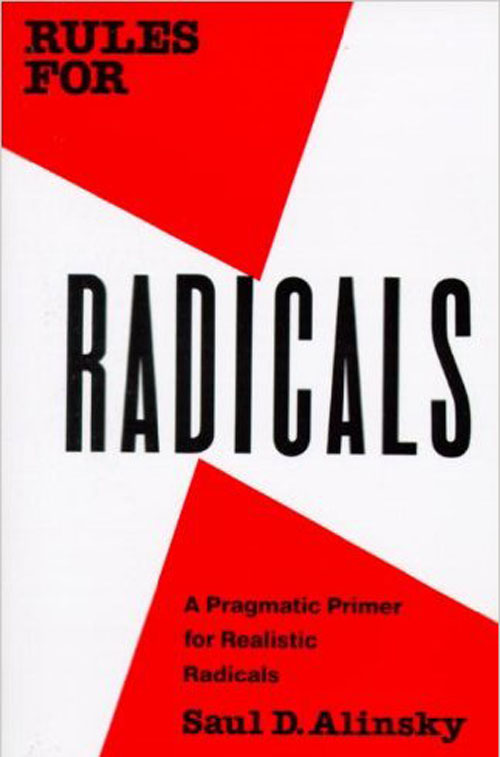TEACHER UNION HISTORY: Fatal mistake of AFT leadership was housing 'community organizations' in the D.C. national office in the late 1960s and early 1970s...
While Substance awaits the review of the important history 'Days of Rage,' I've been reviewing some of the history of teacher unions that I studied and wrote about as long as 40 years ago. One of the reasons why the national union wound up under the domination of New York (city and state, UFT and NYSUT) for at least two generations was that a faction in the national office, in Washington D.C., decided to provide direct assistance to the Black Panthers and other groups that were viewed by the majority of the members as extremists.
 Although Chicago community organizer Saul Alinsky helped develop the agitprop method of community organizing (confrontation with power, etc.), over time the ruling class gets to know the depth of actual power being displayed, and has throughout history often encouraged what are called "Alinsky tactics" because they waste time, money and energy without making a dent in ruling class power. Historically, the ruling class has at times, as Substance editor George Schmidt has documented, bankrolled extreme so-called "revolutionary" outfits because they disrupt and discredit the actual socialist and progressive movements.Because he had no answer to the charges that he was using union members' dues for that purpose, David Selden, who was AFT president, was ousted. The "Shanker Era" had begun. One of the bases for the arguments against Selden was that the union's primary-- many said "sole" -- responsibility was to negotiate contracts and then enforce them. Union members' dues, which in Chicago in 2015 - 2016 for teachers will exceed $1,100 per year, were not supposed to go to directly subsidizing community activism.
Although Chicago community organizer Saul Alinsky helped develop the agitprop method of community organizing (confrontation with power, etc.), over time the ruling class gets to know the depth of actual power being displayed, and has throughout history often encouraged what are called "Alinsky tactics" because they waste time, money and energy without making a dent in ruling class power. Historically, the ruling class has at times, as Substance editor George Schmidt has documented, bankrolled extreme so-called "revolutionary" outfits because they disrupt and discredit the actual socialist and progressive movements.Because he had no answer to the charges that he was using union members' dues for that purpose, David Selden, who was AFT president, was ousted. The "Shanker Era" had begun. One of the bases for the arguments against Selden was that the union's primary-- many said "sole" -- responsibility was to negotiate contracts and then enforce them. Union members' dues, which in Chicago in 2015 - 2016 for teachers will exceed $1,100 per year, were not supposed to go to directly subsidizing community activism.
As one philosopher, studied by many in the leadership of the Chicago Teachers Union more than 40 years after those events said: "History repeats itself. First as tragedy. Then as farce."
In the United States during the late 20th and early 21st Century, the main job of a union is to negotiate a contract, then enforce it for all the union's members. As part of that process, the union also has to engaged in political action -- not "community organizing" so called in the dubious style of Saul Alinsky -- to get legislation that moves the members' interests forward and reduces the power of the boss.
One of the results of what might be called the "ultra left" error of those years was that by the later 1970s, the new leadership, under a right-wing "socialist" grouplet from New York, had aligned the national union with the most reactionary faction of the leadership of America's unions, George Meany's international policies. (About which I wrote in "The American Federation of Teachers and the CIA"). While the complexity of these issues -- and the need for accurate history to help people understand current realities -- needs a lot more discussion in 2015, especially in Chicago, the dangers are as clear in 2015 as they should have been in 1970 and 1971.

